Mislocalization of mitochondria and compromised renal function and oxidative stress resistance in Drosophila SesB mutants
- PMID: 20009008
- PMCID: PMC2841493
- DOI: 10.1152/physiolgenomics.00147.2009
Mislocalization of mitochondria and compromised renal function and oxidative stress resistance in Drosophila SesB mutants
Abstract
Mitochondria accumulate at sites of intense metabolic activity within cells, but the adaptive value of this placement is not clear. In Drosophila, sesB encodes the ubiquitous isoform of adenine nucleotide translocase (ANT, the mitochondrial inner membrane ATP/ADP exchanger); null alleles are lethal, whereas hypomorphic alleles display sensitivity to a range of stressors. In the adult renal tubule, which is densely packed with mitochondria and hence enriched for sesB, both hypomorphic alleles and RNA interference knockdowns cause the mitochondria to lose their highly polarized distribution in the tissue and to become rounded. Basal cytoplasmic and mitochondrial calcium levels are both increased, and neuropeptide calcium response compromised, with concomitant defects in fluid secretion. The remaining mitochondria in sesB mutants are overactive and maintain depleted cellular ATP levels while generating higher levels of hydrogen peroxide than normal. When sesB expression is knocked down in just tubule principal cells, the survival of the whole organism upon oxidative stress is reduced, implying a limiting role for the tubule in homeostatic response to stressors. The physiological impacts of defective ANT expression are thus widespread and diverse.
Figures
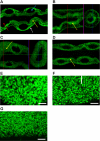

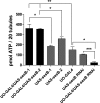
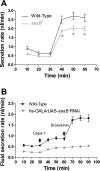

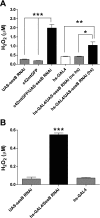
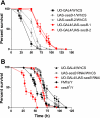
References
-
- Bakker HD, Scholte HR, Van den Bogert C, Ruitenbeek W, Jeneson JA, Wanders RJ, Abeling NG, Dorland B, Sengers RC, Van Gennip AH. Deficiency of the adenine nucleotide translocator in muscle of a patient with myopathy and lactic acidosis: a new mitochondrial defect. Pediatr Res 33: 412–417, 1993 - PubMed
-
- Belzacq AS, Vieira HL, Kroemer G, Brenner C. The adenine nucleotide translocator in apoptosis. Biochimie 84: 167–176, 2002 - PubMed
-
- Boldogh IR, Pon LA. Mitochondria on the move. Trends Cell Biol 17: 502–510, 2007 - PubMed
-
- Bradley TJ, Satir P. 5-hydroxytryptamine-stimulated mitochondrial movement and microvillar growth in the lower malpighian tubule of the insect, Rhodnius prolixus. J Cell Sci 49: 139–161, 1981 - PubMed
Publication types
MeSH terms
Substances
Grants and funding
LinkOut - more resources
Full Text Sources
Molecular Biology Databases

